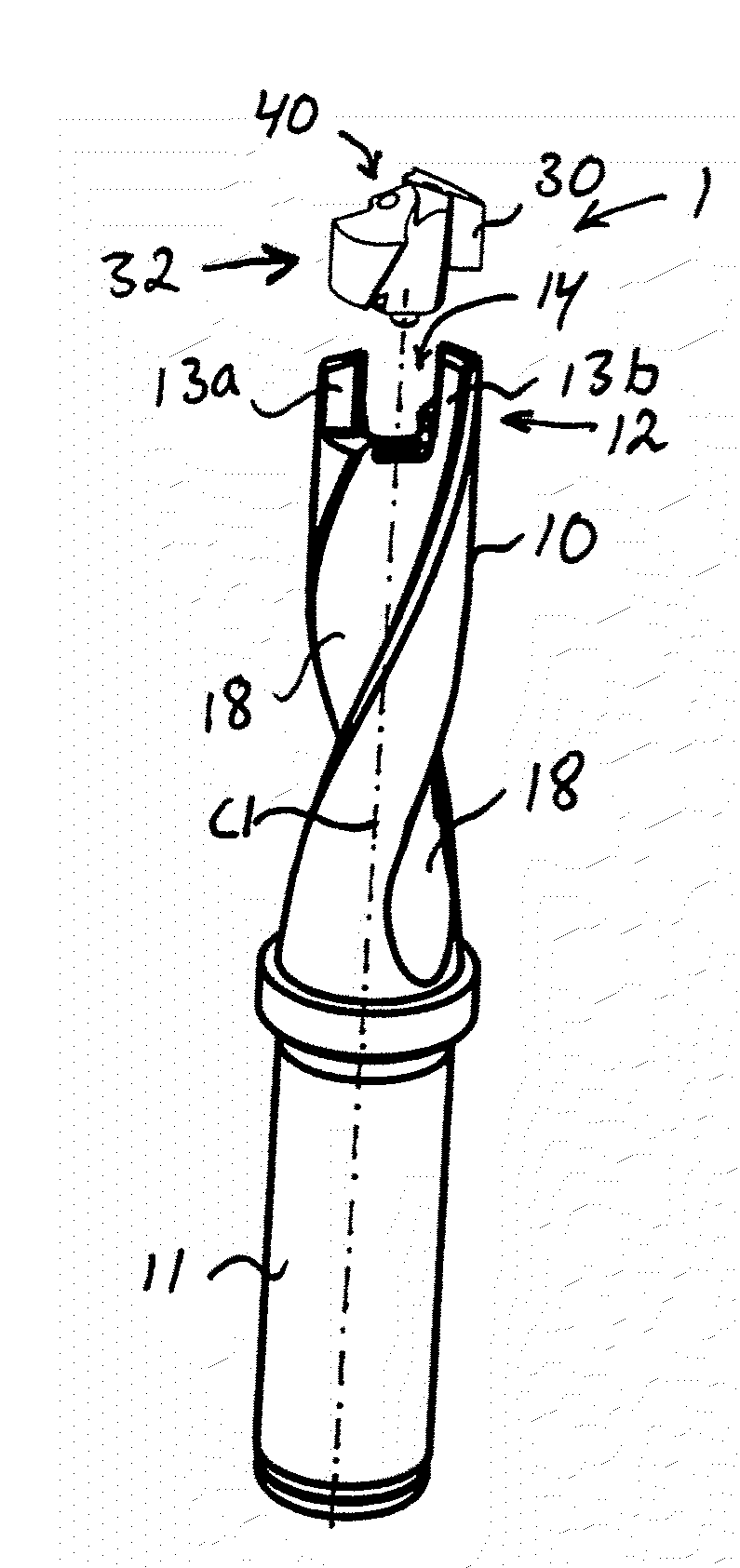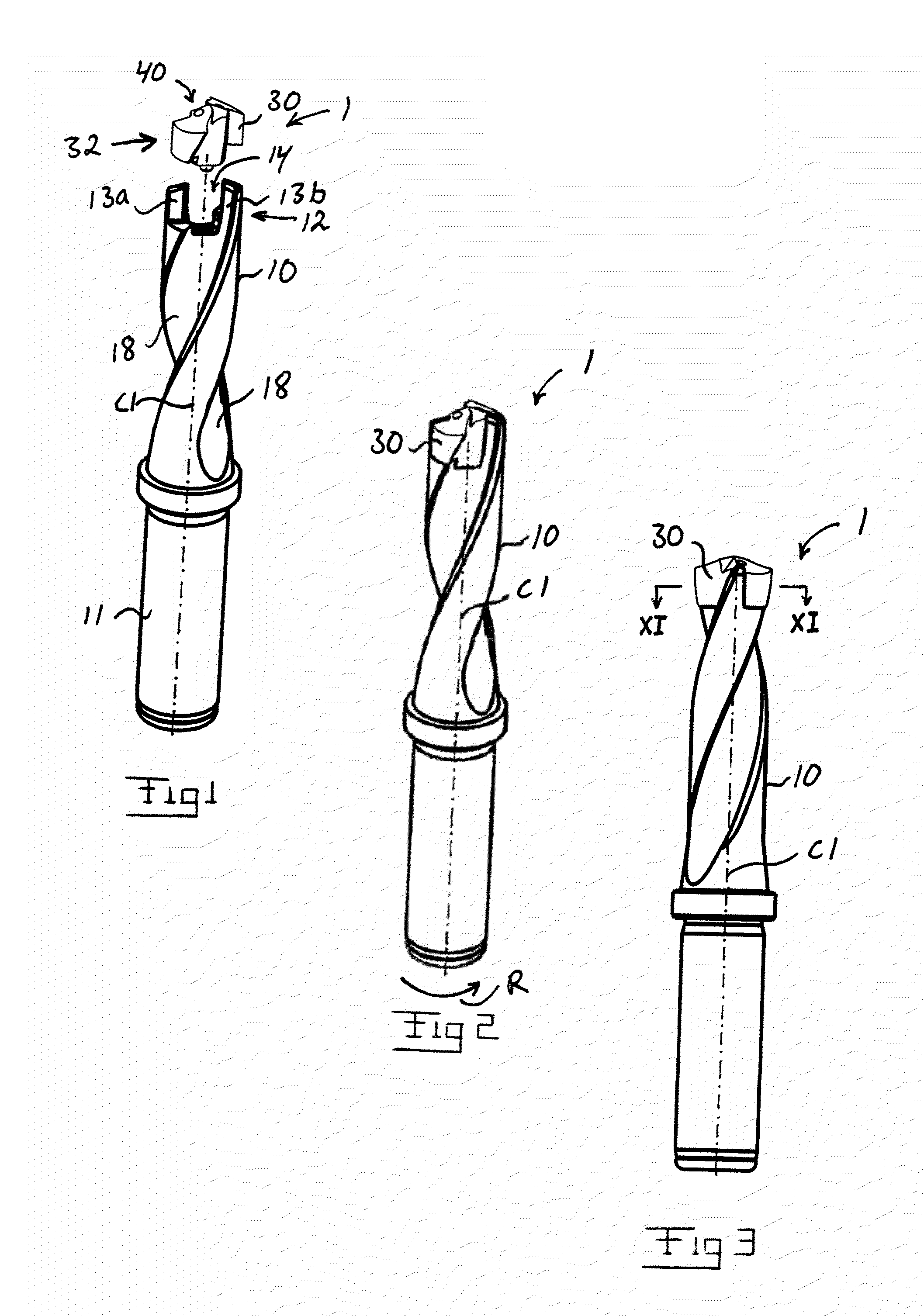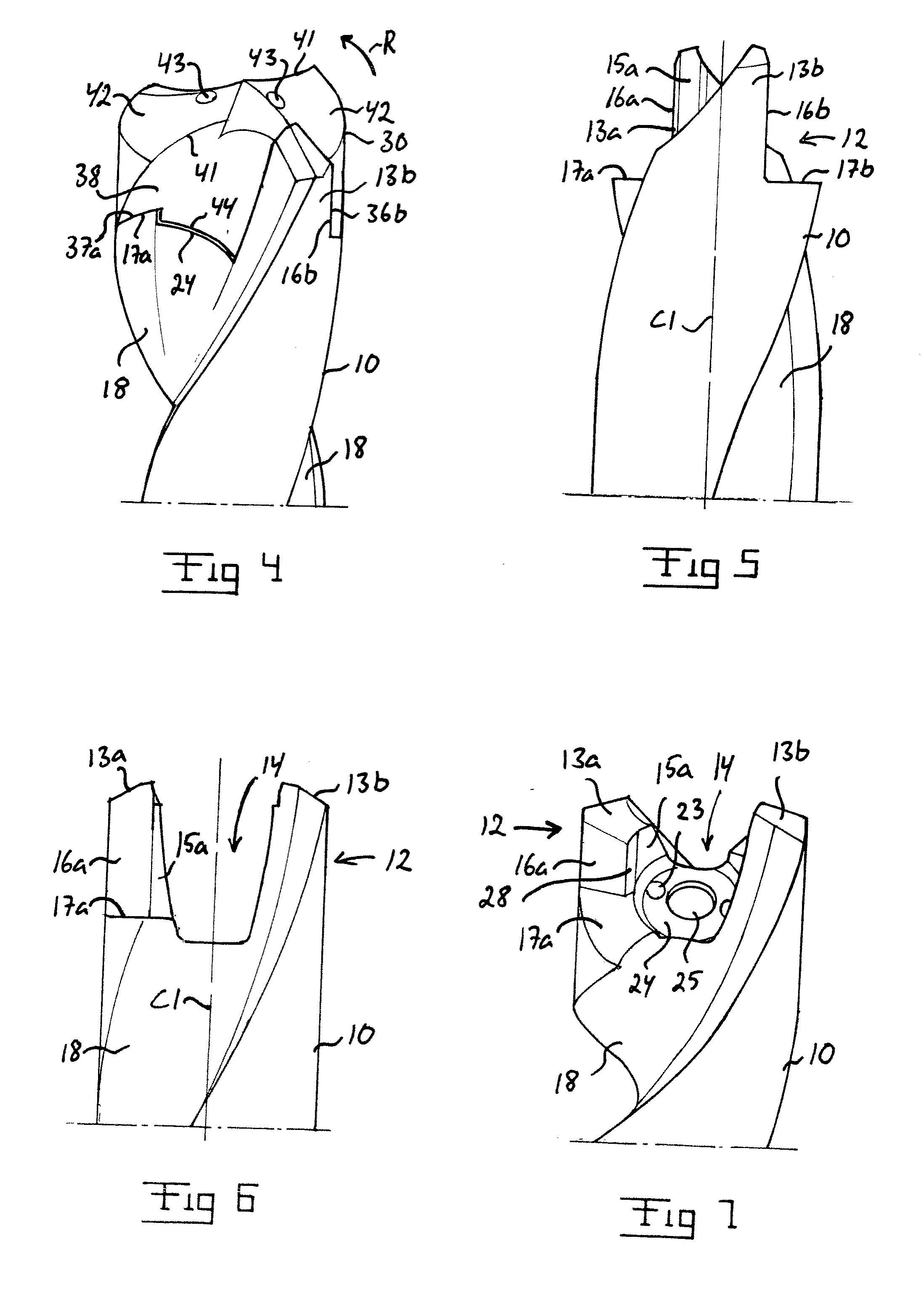Tool, tool body and cutting head
a technology of cutting head and tool body, which is applied in the direction of boring/drilling equipment, turning equipment, milling equipment, etc., can solve the problems of high tolerance requirements for these surfaces and relatively complicated to achieve by mechanical machining, and achieve the effect of facilitating the formation of tool body, and facilitating the formation of cutting head
- Summary
- Abstract
- Description
- Claims
- Application Information
AI Technical Summary
Benefits of technology
Problems solved by technology
Method used
Image
Examples
Embodiment Construction
[0023]The tool 1 of the invention is intended to be rotated for cutting machining of a workpiece. In the illustrated example, the tool is designed as a twist drill, but the tool of the invention could also be designed as another type of tool for rotary cutting machining, such as for instance a milling cutter or the similar.
[0024]The intended direction of rotation of the tool 1 for machining is marked with the arrow R in FIGS. 2, 4 and 11-12. This direction of rotation is in the following denominated “machining direction of rotation” and consequently constitutes the direction in which the tool is intended to be rotated in order to achieve cutting machining of a, preferably metallic, workpiece. Alternatively, the workpiece can be rotated while the tool is kept stationary.
[0025]The tool 1 comprises a tool body 10 and a replaceable cutting head 30, which is detachably attachable to the tool body.
[0026]The cutting head 30 is formed in a one piece of a suitable cemented carbide, i.e. made...
PUM
| Property | Measurement | Unit |
|---|---|---|
| angle | aaaaa | aaaaa |
| torque | aaaaa | aaaaa |
| radius | aaaaa | aaaaa |
Abstract
Description
Claims
Application Information
 Login to View More
Login to View More - R&D
- Intellectual Property
- Life Sciences
- Materials
- Tech Scout
- Unparalleled Data Quality
- Higher Quality Content
- 60% Fewer Hallucinations
Browse by: Latest US Patents, China's latest patents, Technical Efficacy Thesaurus, Application Domain, Technology Topic, Popular Technical Reports.
© 2025 PatSnap. All rights reserved.Legal|Privacy policy|Modern Slavery Act Transparency Statement|Sitemap|About US| Contact US: help@patsnap.com



